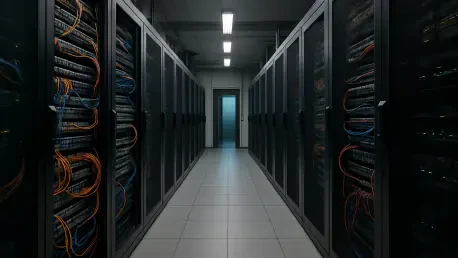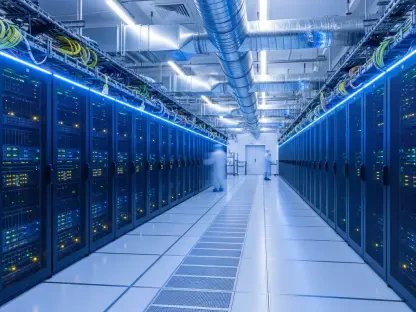I’m thrilled to sit down with Vijay Raina, a renowned expert in enterprise SaaS technology and software design, to discuss the intersection of technology, energy, and environmental policy in the context of Meta’s ambitious $10 billion data center project in Louisiana. With his deep knowledge of large-scale tech infrastructure and thought leadership in software architecture, Vijay offers a unique perspective on how such projects impact both innovation and sustainability. In this interview, we’ll explore the significance of Meta’s data center, the controversy surrounding the accompanying natural gas power plants, the financial and environmental implications for Louisiana, and what this means for the future of tech-driven energy demands.
Can you help us understand the scope of Meta’s new data center in Louisiana and why it stands out compared to their other facilities?
Absolutely, Benjamin. Meta’s data center in Louisiana is a landmark project, primarily because it’s their largest to date, with a staggering $10 billion investment. What makes it stand out is not just the scale but also the power demands—potentially up to 5 gigawatts at full capacity. That’s an enormous amount of energy, equivalent to powering millions of homes, and it reflects the growing needs of AI-driven workloads. Unlike many of Meta’s other facilities, this one is paired directly with dedicated power infrastructure, which signals a shift toward securing energy independence for such massive tech hubs.
What can you tell us about the natural gas power plants Entergy is building to support this data center?
Entergy’s plan involves constructing three large natural gas power plants, set to come online between 2028 and 2029. At peak operation, these plants will generate 2.25 gigawatts of electricity, which is a significant chunk of the data center’s needs. This kind of direct energy sourcing is becoming more common for tech giants, as it ensures reliability for power-hungry operations like AI training. However, it also ties the project to fossil fuels for decades, which is where much of the debate around sustainability comes into play.
There’s been quite a bit of pushback from locals and industry groups in Louisiana. What’s driving this controversy?
The controversy largely stems from concerns about fairness and long-term impact. Some industry groups, representing major players in the state, are frustrated because they feel Meta and Entergy might be getting preferential treatment, especially with plans for 1.5 gigawatts of solar power development. These groups have struggled to access renewable energy for their own operations, so seeing a tech giant potentially jump the line rubs them the wrong way. Beyond that, many Louisianans worry about the financial burden—natural gas plants often operate for 30 years or more, and there’s uncertainty about who pays once Meta’s 15-year contract with Entergy ends.
Speaking of financial burdens, what risks do Louisiana ratepayers face with this deal?
The risks are substantial. For one, after Meta’s 15-year contract expires, there’s a real chance that ratepayers could be left covering the ongoing costs of these power plants. Additionally, projects of this scale often exceed budgets—overruns are almost expected—and historically, those extra costs get passed on to consumers. Then there’s the $550 million transmission line needed to connect the data center to the grid, which ratepayers are also on the hook for. It’s a lot of financial exposure for a state’s residents, especially if the economic benefits don’t trickle down as promised.
Meta has been vocal about its sustainability goals, like achieving net zero by 2030. How does this project align with or challenge those commitments?
This project is a double-edged sword for Meta’s sustainability goals. On one hand, they’ve been aggressively buying renewable energy, including a recent 100-megawatt deal, which shows intent to balance their footprint. On the other hand, relying on natural gas power plants for such a massive data center locks in carbon emissions for decades, making the 2030 net zero pledge much harder to reach. To mitigate this, Meta will likely lean on carbon offset credits from removal projects, but that’s often seen as a less direct solution compared to cutting emissions at the source. It’s a tough balancing act between operational needs and environmental promises.
How do you see a project of this magnitude shaping Louisiana’s energy landscape over the long term?
The impact on Louisiana’s energy landscape could be transformative, but not without challenges. The data center’s 5-gigawatt demand, coupled with the 2.25 gigawatts from the gas plants, will significantly ramp up energy consumption in the state. This could strain existing infrastructure and push for more generation capacity, potentially delaying the shift to renewables if natural gas remains the go-to solution. Long-term, there’s also the environmental concern of locking in fossil fuel dependency, which could hinder broader climate goals for the region. It’s a pivotal moment for how Louisiana balances industrial growth with sustainability.
Looking ahead, what is your forecast for the role of data centers in shaping energy policies and sustainability practices in the tech industry?
I think data centers like Meta’s will increasingly drive energy policy discussions in the tech industry. As AI and cloud computing demands grow, we’re going to see more companies building or partnering on dedicated power solutions, whether that’s gas, nuclear, or renewables. My forecast is that sustainability will become a competitive differentiator—tech giants will face mounting pressure from consumers and regulators to prioritize clean energy, even if it means higher upfront costs. We might also see innovation in energy-efficient architectures or decentralized grids to reduce reliance on traditional power plants. The next decade will be critical in defining whether the industry can truly align growth with environmental responsibility.









